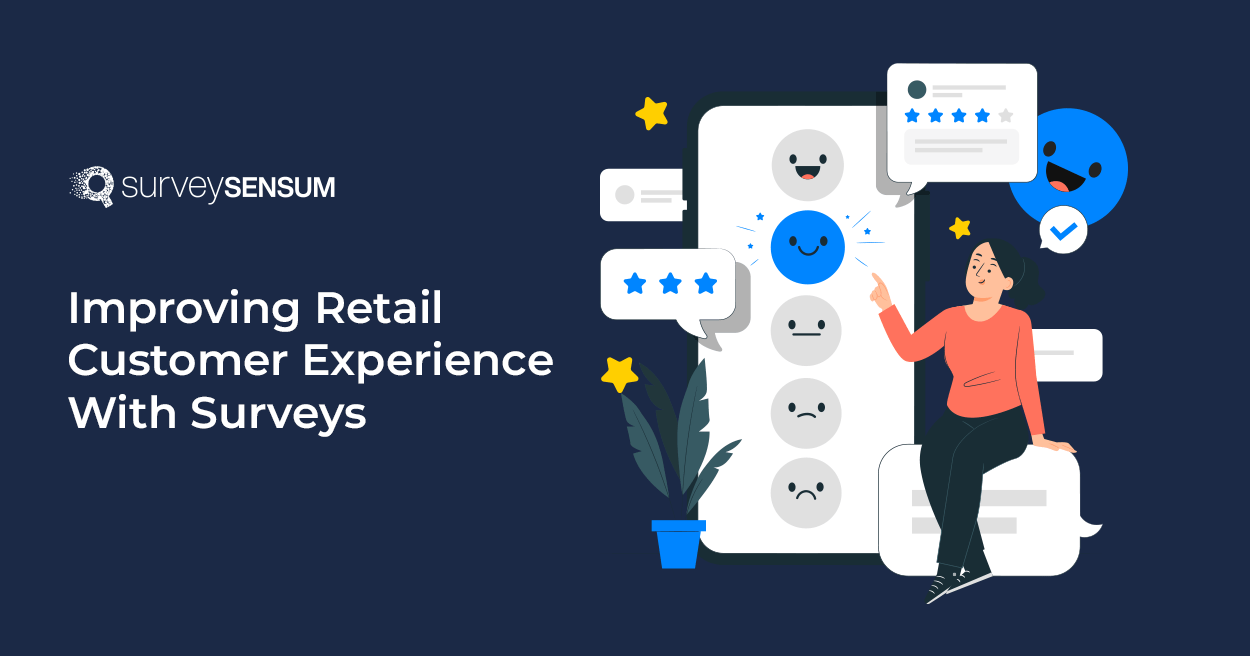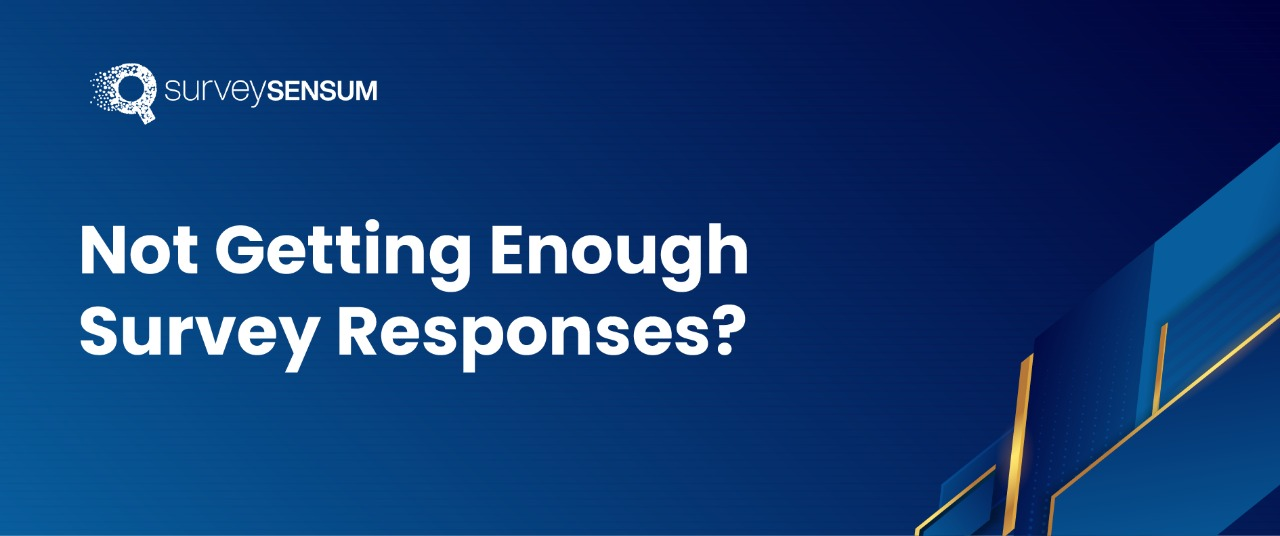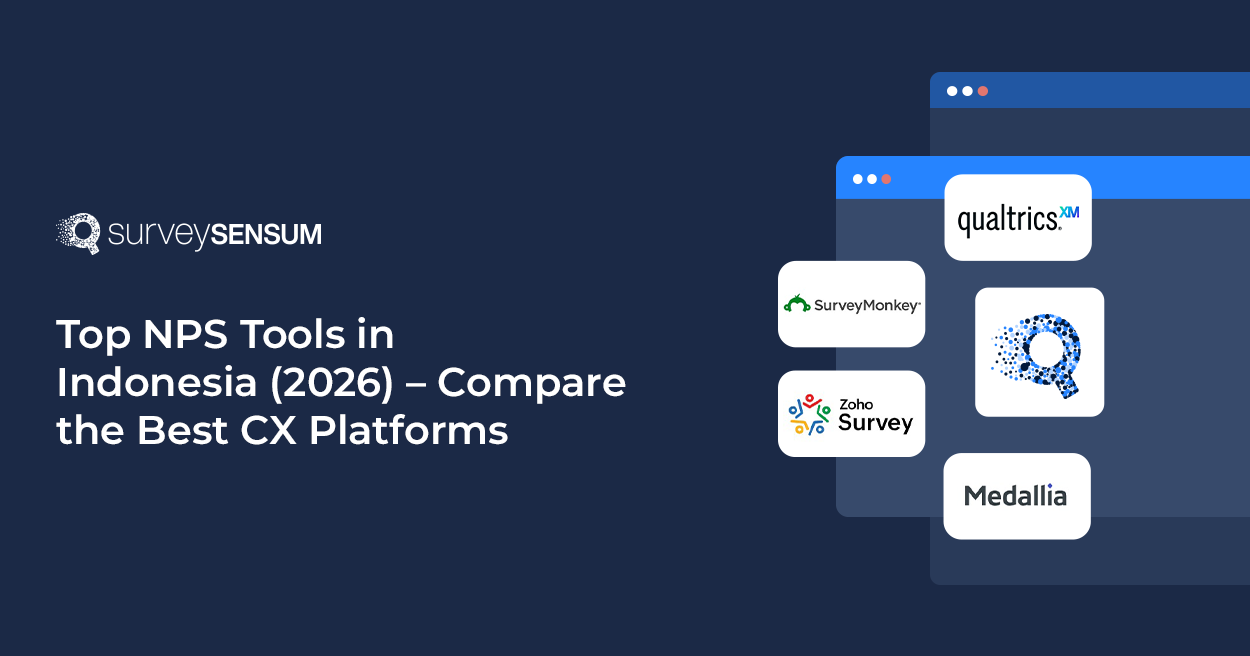

Improving the retail customer experience for your brand is not only an expectation from your customers but also a requirement for your business growth.
In today’s competitive retail landscape, customer experience has emerged as an important factor that can either make or break a business. And with the retail customer feedback platform, businesses are delivering exceptional customer experiences to foster customer loyalty. It also generates positive word-of-mouth and drives sustainable growth for your business.
According to a research report by PwC titled, “Experience is Everything”, 73% of the customers pointed to customer experience as an important factor in their shopping experience. Yet only 49% of the customers said that they had positive customer experiences with companies.
So, how to deliver great retail customer experiences?
By leveraging the power of retail surveys. to understand your customer’s satisfaction levels and identify areas for improvement.
Let’s say you ordered some skin care products from a beauty brand. You received the products within 5 days and in a not-so-well-packed condition.
After one week of receiving the products, you received a Whatsapp Survey from the brand to rate their products. So, you highlighted the point on better packaging. Within 2 days the brand reached out to you to apologize for the packaging and ensured that they have taken actionable steps to ensure better packaging with all their products. Also, they offered you a 10% discount on your next order.
Now won’t you feel valued and appreciated by the brand? They asked you about your experience with them at the right time, took action on your feedback, called you to inform you about the action taken, and took an extra step by giving you a personalized discount.
This is how by gathering customer feedback and taking action on that feedback, brands can create a positive customer experience.
If you want to follow the steps of big brands like Amazon, and Zappos who have won the crossplay game of retail customer experience?
Then this guide is for you.
Improving In-Store Retail Experience
Improving Digital Retail Experience
How You Can Benefit From Exceptional Retail Customer Experience?
Conclusion
How To Improve Retail Customer Experience With Surveys?
Why Survey?
They are an essential tool to measure your customer experience. Not only do they help you to understand your customer’s preferences and needs they also help you identify the areas of dissatisfaction.
But the key here is to send the right survey, asking the right questions, at the right time.
If either of these goes wrong, you won’t get reliable feedback, or sometimes no feedback!
For example, you can launch a CES survey to measure the ease of your customers with the payment process. [You must not launch an NPS survey here – that’s why it is imperative to know which survey to send at which touchpoint!]
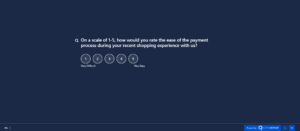
→ “On a scale of 1-5, where 1 is ‘Very Difficult’, and 5 is ‘Very Easy’, how would you rate the ease of the payment process during your recent shopping experience with us?”
For more detailed feedback, you might follow up with an open-ended question, such as:
→ “Could you please provide any comments or suggestions on how we could improve our payment process to make your shopping experience better?”
This way, you not only identify the issue but also get actionable insights from your customers in improving overall CX.
Want to Improve Your Retail Customer Experiences? – Request a Demo
Now the question is which survey should you launch at what touchpoint in both Digital Retail Customer Journey and In-Store Retail Customer Journey?
— Let’s answer this question!
Improving In-Store Retail Experience
Let’s first improve the in-store retail customer experience at 5 relevant touchpoints of the customer journey.
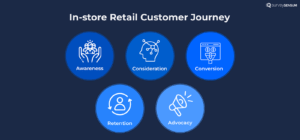
Stage 1 – Awareness
The first stage in an in-store retail customer journey is called “Awareness”. This is the stage where your customer becomes aware of your store or brand.
Customers can be made aware of your brand or product through different channels like word-of-mouth, ads, etc. There can be many factors that might influence your potential customers on their decision to shop at your store such as negative reviews, badly organized entrance and store layout, and many other factors.
So what can you do at this stage to ensure a positive impact?
The first thing you need to understand is that this is not the stage where you gather customer feedback because these are not your customers, yet. But there are still a couple of factors that you need to take into account that might influence their decision.
- Create an eye-catching store entrance with well-lit signage, appropriate mannequins, and a proper display of your products.
- Ensure a positive brand image and reputation by creating happy and satisfied customers. You can do this by actively listening to your customers, identifying areas for improvement, and taking action on their feedback.
- Create engaging advertisements. Take inspiration from the greats like Zomato, McDonalds, etc.
| Touchpoints | Word-of-mouth, storefront, or even an advertisement |
| Surveys to take | Usually none at this stage. |
| Why you should not send surveys at this point? | The customers are being aware of your business only. Therefore, shooting surveys their way now wouldn’t be an ideal choice. |
Stage 2 – Consideration
The second stage is called “Consideration”. At this stage, the customers are deciding whether to buy from your store or your competitors.
So, here’s the deal – after customers have had their first encounter with your brand, they might hesitate before adding items to into their carts.
But don’t worry! This is your chance to step in and give them that extra push to shop with you.
How?
- Actively utilize online customer surveys or feedback forms to collect feedback on the factors that influence customers’ shopping decisions, such as product quality, pricing, convenience, customer service, etc.
- Incorporate insights into customers’ decision-making process. Recognize what they are looking for, include their preferences and needs, and remove any barriers they faced when considering your products.
| Touchpoints | In-store display, sales assistance, etc. |
| Surveys to take | Customer Satisfaction Survey (CSAT) |
| When to take | After the customers have interacted with your sales assistants and have been made aware of your brand. |
| Survey questions to ask |
|
| Why take the survey |
|
Stage 3 – Purchase
After initial hesitation, your customer added some items to the cart and headed over to the checkout counter. They’re ready to check out and make their purchase, but uh-oh! They approach the checkout counter only to be greeted by a never-ending queue. Patience wearing thin, they finally reach the billing area, only to encounter a malfunctioning payment system. Frustrated, the customer abandoned the cart and left your store.
Improve this touchpoint’s experience by
- Gathering feedback from customers about their shopping experience, including checkout, service, and product quality.
- Using post-purchase follow-up emails to pinpoint issues customers face and take action.
| Touchpoints | The payment process, checkout experience, product quality, customer service, etc. |
| Surveys to take | CES or CSAT |
| When to take | At the point of sale or post-purchase |
| Survey questions to ask |
|
| Why take the survey? |
|
Stage 4 – Retention
After your customers made their purchases from your store, the next goal for you is to ensure that they return to your store.
Let’s say you got 10 new customers who visited your store in the last week. Each of them had their separate experiences where they might have faced some issues or might have some points of improvement for your brand.
But how will you know about their experiences, their issues, or their thoughts? By asking them about their experiences, right?
This stage is highly dependent on how and when you collect customer feedback and what you do with it.
- Create post-purchase follow-up surveys to collect feedback from your customers to understand their experience with your brand – understand their pain points and look for areas of improvement.
- Understand your customer’s expectations regarding personalized offers, rewards, loyalty programs, and customer service – these are important factors when it comes to customer retention.
| Touchpoints | Post-purchase services, customer support, loyalty programs. |
| Surveys to take | CSAT and CES |
| When to take | After the customers have interacted with any of your post-purchase services or joined a loyalty program |
| Survey questions to ask |
|
| Why take the survey |
|
Stage 5 – Advocacy
When customers have a positive experience and receive value from your brand are more likely to become your loyal customers and advocates. And when they do, they start referring you to others.
At this stage, it’s all about fostering a genuine connection with your customer. By prioritizing their needs and delivering exceptional experiences, you strengthen the bond and create a foundation for long-term customer relationships. This loyal customer base will help you by bringing repeat business and becoming your brand advocates – creating a positive brand image and attracting new customers.
But how to make that happen?
- Use surveys to identify your brand advocates and understand why they like and promote your brand. Use the data to create similar experiences for other customers. Identify what is working and promote that.
- Ask them for their testimonials and reviews that can be used for marketing on websites and social handles to bring in more customers.
| Touchpoints | Customer referrals, online reviews, and social media shares. |
| Surveys to take | Net Promoter Score |
| When to take | After the customer has made a referral, left an online review, or shared your content on social media. |
| Survey questions to ask |
|
| Why take the survey | To gauge how likely your customers are to recommend your store to others? This indicates their satisfaction with your business. |
That’s all with the physical stores. Now let’s see how SurveySensum can help with your online retail experience.
Improving Digital Retail Experience
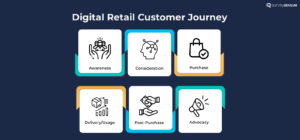
81% of retail shoppers conduct online research before buying — even when planning to purchase in-store.
This shows that no matter where customers end up shopping, their customer journey always starts with a quick search on the internet regarding the brand and products.
So, it makes sense that brands adapt themselves to the growing online shopping trends and patterns and ensure that their customers experience a seamless, personalized, and engaging shopping experience across their digital platforms, right? Yes
But how to do that?
Simple, by harnessing the power of surveys.
Now, let’s understand the important touchpoints that you can work on to improve your digital retail experience and enhance your customer experience.
Stage 1 – Awareness
This is the initial stage where customers become aware of your brand or product. It can happen through various channels, such as advertisements, social media, word-of-mouth, or search engines.
As a retail brand, there are a few factors that can influence your potential customer’s shopping decision with your brand.
The first and foremost thing to note is not to send any type of survey at this point of touchpoint because these visitors are yet to be “your customers”. So, no need to send surveys at this point.
But still, there are a few things you can work on to ensure a positive online retail CX:
- Ensure positive brand visibility by actively listening to your customers via social media and online reviews.
- Create and run engaging advertisements on online platforms such as Instagram, Facebook, and YouTube to engage with your customers.
- Optimize your website and mobile app to ensure ease of use.
| Touchpoints | Advertising, Social media, Online reviews, Search results, etc. |
| Surveys to take | None at this stage |
| Why take the survey | Customers are only becoming aware of your business so surveys are not usually applicable at this stage. |
Stage 2 – Consideration
At this stage, customers are evaluating your products against others. Customers compare the availability of an item, its price, delivery time, and more.
Let’s say you want to buy a pair of sneakers. You go to Amazon and after hours of browning, you found the one you want to buy.
But be honest, do you immediately click “add to cart”?
– No, right?
You browse through other websites or apps and make comparisons based on the pricing, delivery time, available colors, etc. Then after a satisfactory search, you finally make your decision.
Now, this is the perfect time for the brand to intervene and influence your shopping decision.
But how?
- Gather feedback to collect information regarding their interaction with your brand. This includes website navigation, product availability, etc. This will help you to engage your customer with your brand which might influence their purchase decision.
- Actively look for areas for improvement like competitors, product varieties, etc, and take action to ensure a better experience.
| Touchpoints | Website browsing, Product comparison, Online chats, etc. |
| Surveys to take | Customer Effort Score (CES) |
| When to take | After they interact with your website, live chat support, or other information resources. |
| Survey questions to ask | “How easy was it to find the information you were looking for?” |
| Why take the survey | Understanding the ease of finding information can help you to streamline your customer’s decision-making process and improve your website or chat interface for a better user experience. |
Stage 3 – Purchase
In this stage, the customer makes the decision to purchase a product or service from your brand. This is where you need to ensure that the purchasing experience should be smooth, secure, and convenient.
But how to do that?
- Send post-purchase follow-up surveys via emails or Whatsapp surveys to gather insights into your customer’s purchasing experience. This includes the checkout process, customer service, etc.
- By actively collecting feedback from your customers to understand their pain points and issues that they might have faced while purchasing from your online store.
- Take action on any pain points or negative feedback shared by your customers and inform your customers regarding the action taken. This will ensure that your customers feel valued for their feedback.
| Touchpoints | Online store or Mobile app. |
| Surveys to take | Customer Satisfaction Survey (CSAT) |
| When to take | Immediately after purchase completion |
| Survey questions to ask |
|
| Why take the survey | To measure immediate satisfaction with the purchase process. It helps to identify and resolve any friction in the purchase journey. |
Stage 4 – Delivery/Usage
Ipsos and Octopia conducted a survey to understand consumers’ expectations of e-commerce in terms of services and customer experience. They found out that 85% of online shoppers said that a poor delivery experience would prevent them from ordering from that online retailer again.
Any communication related to the delivery of an item is one of the crucial touchpoints in the retail customer journey.
If you aren’t able to deliver the item in time or at the described location, it’s essential to communicate with the customers. Apologize for the inconvenience and provide a clear explanation for the situation.
You can also improve this touchpoint by
- Collecting customer feedback on product delivery. This will help you in understanding your customer’s pain points like product packaging, delivery time, etc.
- Take immediate action on negative feedback or any issues faced by the customers and communicate this action to your customer.
| Touchpoints | Product delivery, product usage, installation/setup, etc. |
| Surveys to take | Customer Satisfaction Survey (CSAT) |
| When to take | After the product has been delivered/used for the first time |
| Survey questions to ask |
|
| Why take the survey | This gives insight into the efficiency of the delivery process and initial product satisfaction, helping to address any issues promptly. |
Stage 5 – Post-Purchase
After making a purchase, customers enter the post-purchase stage. This is a critical phase where businesses have an opportunity to delight their customers and build loyalty. This stage is particularly important when selling high-end products, like designer bags, as it allows you to gauge satisfaction with the quality and style of these high-investment items.
This is the point where your customers might reach out to you for assistance in refund, replacement, and maintenance. So, the tone you set at this stage will influence their future shopping decisions with you.
But how to ensure a positive experience here?
- Launch CSAT and NPS surveys to assess customer satisfaction and loyalty.
- Gather feedback to understand customers’ expectations regarding personalized offers, rewards, customer service, and post-purchase support.
| Touchpoints | Customer service, self-service portals, troubleshooting guides, etc. |
| Surveys to take | Customer Effort Score (CES) |
| When to take | After the customer has interacted with your customer support team. |
| Survey questions to ask |
|
| Why take the survey? | You can measure the effectiveness of your support channels and find ways to improve the customer service experience. |
Stage 6 – Advocacy
This is the stage where your customers become loyal to your brand and recommend you to others.
If your customers have a great time with your brand, chances are they’ll stick around and become your biggest fans. They might keep coming back for more and spread the word about your brand to others.
This is the stage where you nurture a relationship with your customers by appreciating their loyalty to your brand. You can do this by:
- Using surveys to identify and engage your brand advocates in the digital space.
- Conduct follow-up surveys or interviews with loyal customers to understand their experiences and motivations.
- Ask your customers about their willingness to recommend your brand, social media engagement, and suggestions for enhancing your digital CX.
| Touchpoints | Customer reviews, repeat purchases, etc. |
| Surveys to take | Net Promoter Score |
| When to take | Post-purchase and after they have had enough interaction with your product/service |
| Survey questions to ask | “On a scale of 0-10, how likely are you to recommend our brand to a friend or colleague?” |
| Why take the survey | This helps you measure customer loyalty and advocacy. |
How You Can Benefit From Exceptional Retail Customer Experience?
Ensuring a positive retail customer experience will enable you to stand out from the rest of the competition.
In fact, a study by Statista on Consumer Attitude and Behaviour found that around 94% of customers said that a positive customer experience made them repeat purchases from a company.
In addition, it can also create a memorable impression in the customers’ minds, driving them to choose your business over others.
Here are some key benefits of having a good customer experience in retail businesses.
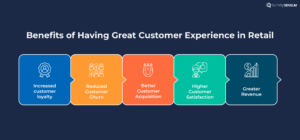
1. Increased Customer Loyalty
When customers have a favorable experience with your brand, they are more likely to make repeat purchases. A prime example of a brand that understands and meets customer needs is Amazon.

Brand Example: A key driver of customer loyalty for Amazon is its popular Amazon Prime membership program. As of 2022, Amazon had 157.4 million Prime subscribers. InsiderIntelligence estimates that this number will rise to 168.3 million subscribers by 2025, highlighting the program’s continued growth and success.
2. Reduced Customer Churn
Happy customers are less likely to reach out to your competitors and tend to stay with your business. This leads to better customer retention and reduced customer churn.
According to the research done by Frederick Reichheld of Bain & Company, increasing the customer retention rate by 5% increases profits by 25% to 95%
To give you a better idea about the importance here, consider a clothing retail brand. The store is disorganized with clothes strewn about, and the staffs are unsupportive and not helpful. In addition, when a customer made a purchase, the checkout process was quite slow and tedious.
Would you ever return to a store if this happened to you? No, right?
And that’s why it is essential to provide a great customer experience in your retail business.

Brand Example: Starbucks understands the significance of customer experience in reducing churn and fostering customer loyalty.
Starbucks prioritizes aspects such as friendly and knowledgeable baristas, comfortable store ambiance, and personalized beverage customization to create a positive customer experience. By consistently delivering a delightful experience, Starbucks builds long-term customer relationships, resulting in improved retention and reduced churn rates.
3. Better Customer Acquisition
A good customer experience can build customer loyalty, which, in turn, can lead to customer referrals and the acquisition of new customers at no additional cost to your business. This, ultimately, contributes to the growth of your business.
According to a study by Nielsen, 92% of customers trust recommendations from friends and family more than any other form of advertising.
This highlights the significance of positive word-of-mouth from satisfied customers in attracting new customers and enhancing overall customer satisfaction.
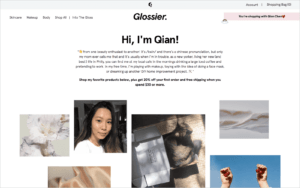
Brand Example: Let’s take Glossier as an example. This beauty brand has successfully built its customer base by delivering exceptional customer experiences. Emily Weiss, the founder of Glossier, attributes their marketing success to word of mouth.
Glossier actively encourages its customers to become brand representatives because who better represents a brand than satisfied customers? This engagement strategy fosters greater customer satisfaction in retail and motivates customers to refer the brand to others.
4. Higher Customer Satisfaction
Customer satisfaction is a crucial aspect of the customer experience, as it directly impacts their purchasing behavior.
According to a study by Harvard Business Review, customers who had the best past experiences spend 140% more compared to those who had the poorest past experiences.
To ensure high customer satisfaction, it is important to focus on providing a smooth and enjoyable shopping journey for customers. A prime example of a company that excels in customer service is Zappos. They have built a reputation for delivering exceptional customer experiences.

Brand Example: Zappos goes above and beyond to cater to its customers. They offer 24/7 support, a generous 365-day return policy, and free shipping. What sets them apart is their customer support staff, who are trained to provide outstanding service. Zappos is renowned for its quick yet empathetic customer service. There are numerous stories highlighting their commitment to going the extra mile for customers.
5. Greater Revenue
McKinsey research reveals that improving customer experience has helped businesses increase their sales revenue by 2%-7% and profitability by 1%-2%.
When a customer experiences a smooth shopping experience, they are more likely to buy more products, increasing the revenue of the business.
Imagine yourself shopping. The retail website you signed in to offers the items you want, is deliverable to your place at your desired time and provides the payment option of your liking. Then you tend to buy from them. Not just once but repeatedly.

Brand Example: Southwest Airlines is known for its exceptional customer service, which has contributed to its strong financial performance. By providing friendly and efficient service, transparent pricing, and a hassle-free travel experience, Southwest has built a loyal customer base and achieved consistent revenue growth.
Conclusion
In all the touchpoints we discussed, surveys are an effective way to understand the reasons behind customers’ actions as well as their pain points. These surveys will help you in identifying the areas of improvement in your retail customer experience.
But what you must understand is that listening to them isn’t enough. Improving retail customer experience involves acting on that feedback.
Analyze customer feedback, identify areas of improvement, and make the necessary changes. Use an efficient retail feedback platform like SurveySensum, for better management, which will allow you to:
- Launch customizable NPS, CES, CSAT surveys, and more
- Collect omnichannel feedback in real-time
- Identify touchpoints with the most friction with journey-based dashboards
- Identify top trends and sentiments from thousand of feedback text analysis in just a few minutes.
- Get instant detractor alerts on your CRM so you can close the loop in time. Receive immediate detractor alerts on your CRM system, enabling you to promptly close the loop and address concerns.
- Integrations with third-party tools
- Support multilingual surveys






